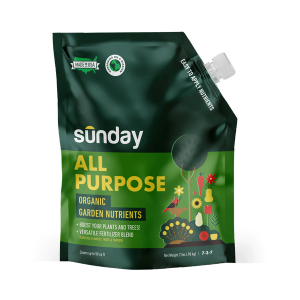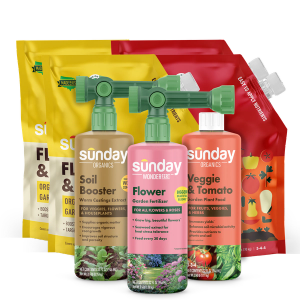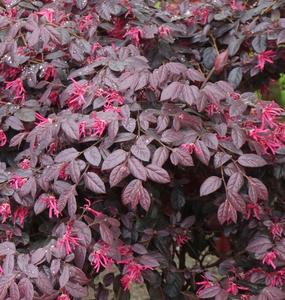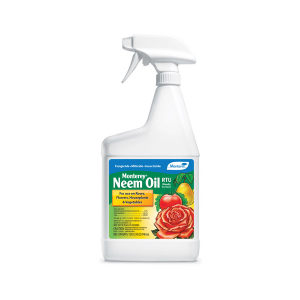What is a perennial plant?
We love these ornamental plants for the color, texture, and beauty they add to landscaping and gardens. The best part? Unlike annuals, which grow and die in one year, perennials keep coming back for several years.
Planting tools and materials
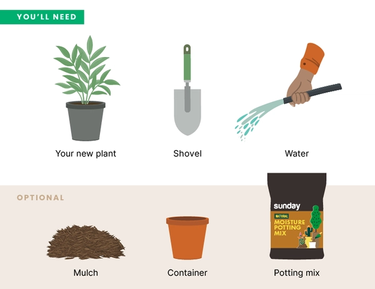
Before you plant
We know you’re eager to plant your beautiful new flowers or grasses. But putting in a little prep now will set you on the path to long-term success.
Check the calendar
The best time to plant perennials is in spring or early fall. But you don’t have to worry about figuring that out! Sunday knows your climate, as well as optimal planting seasons, and will ship your plant at the right time for planting. All you have to do is plant ASAP after receiving and unboxing your plant.
Call before you dig
To protect yourself and your utilities by calling 811 a few days before you dig to have a technician flag your buried lines to protect yourself and your utilities.
Location, location, location
It may be tempting to plant perennial flowers and grasses for aesthetics alone, but remember you’re dealing with a living species that has needs. Consider the following when choosing a planting site:
- Mature plant size
- Sun requirements
- Moisture needs & availability
- Suitability for a container (if potting the plant)
- Maintenance requirements and accessibility
How to plant your perennial plant
Sunday Tip:
Species-specific information on location, spacing, sun requirements, mature size, and more is usually available on a plant tag. If you bought your plant from Sunday, this info is available from our online plant product pages.
It’s finally time to get your hands dirty! Below are instructions for planting in-ground, as well as for planting in a container.
Planting in-ground
Prep
- Dig a hole as deep as the container that the plant arrived in.
- Remove any rocks and debris.
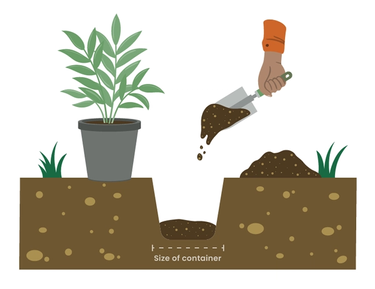
Plant
- Remove from the pot and gently separate the roots.
- Place the plant in the hole, making sure the plant is standing straight and not leaning.
- Fill back in with soil, gently pressing to make sure the plant is secure.
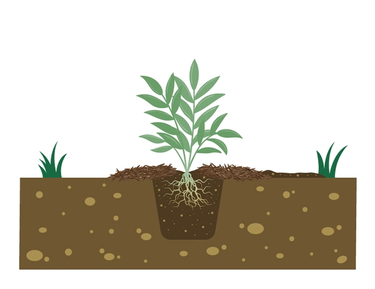
Sunday Tip:
Mulching around your plant can promote moisture retention, maintain even soil temps, and discourage weed growth. And it’s easy! A thin layer (2-3 inches) of shredded bark, leaves, straw, or other organic matter works great.
Water
- Water immediately after planting, then keep the soil moist (but not saturated) until the plant is established, about 3-4 months after planting.
- During periods of drought, more frequent watering may be necessary to keep the soil moist.
- After the plant is established, water according to specific plant needs.
Soil may settle after watering. Add more soil as needed.

Planting in a container
Prep
- Make sure the container is clean.
- Add enough potting mix to the bottom of the container so that the top of the plant root ball is about 1 - 2 inches below the top of the container.
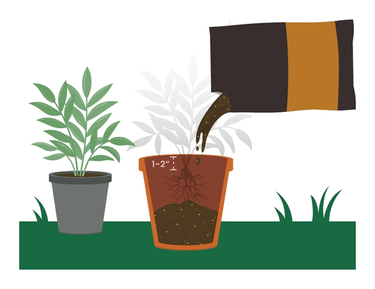
Plant
- Remove from the pot and gently separate the roots.
- Place the plant in the hole, making sure the plant is standing straight and not leaning.
- Fill back in with soil, gently pressing to make sure the plant is secure.
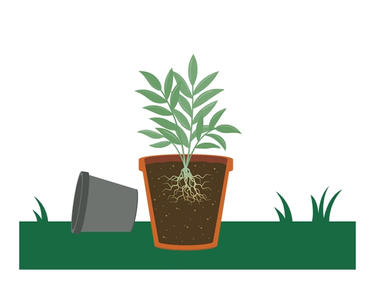
Sunday Tip:
Don’t add materials to the bottom of your container such as broken clay pottery, stones, etc. for drainage. Adding these bulky materials actually reduces drainage from the pot, which is not good for your plant.
Water
- Water immediately after planting, then keep the soil moist (but not saturated) until the plant is established, about 3-4 months after planting. During periods of drought, more frequent watering may be necessary to keep the soil moist.
- After the plant is established, water according to specific plant needs

Proud plant grower
Already have the plants you need? Congrats! Still need to buy trees, flowers, or shrubs? You can find your new PFF (plant friend forever) here.
Let’s get social!
We’d love for you to share your planting journey with us! Tag those proud plant parent pics with #plantsofsunday on Instagram.
Need help with your Sunday live plant purchase? We're here to help!
- (415) 903-6932
- [email protected]
Cited sources
PennState Extension. Planting Ornamentals.
University of Georgia Cooperative Extension. Soil Preparation and Planting Procedures for Ornamental Plants in the Landscape.








